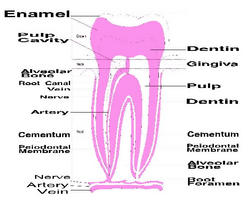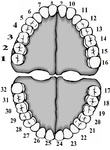Tuning Fork TherapyŽ
Tuning Fork TherapyŽ Level Seven
Your Choice---Home Study - or - come in person.
The Level Seven Tuning Fork Therapy Practitioner® Certification offers instruction in the use of tuning forks on the meridian system of the body as it relates to the teeth.
Yes, our teeth are alive and they are connected to organs, tissues and body systems of the body.
Learn how you can enhance the organs and organ systems of your body through simple points around your mouth. This manual will provide clear and concise direction for the use of specific tuning forks on the meridians of the body.
Cost of Course
Cost of Level Seven Tuning Fork Therapy Practitioenr® Certification
Contact clare@charitydiy.org for pricing information
Course Includes:
Students will receive the following:
Tuning Fork Therapy® Level Seven Manual
64 Hz. Otto Tuning Fork
Hand-outs
Test
About this Course
Tuning Fork Therapy®, Level Seven is an instructional course providing clear and concise direction for the use of tuning forks in the healing session.
This book is only an introduction in to the anatomy of the tooth and the teeth in general and their association to the meridian system of the body. This course looks at how the teeth can be affected by the organs and organ systems of the body. Knowledge of the teeth meridians can also help as an additional assessment tool to problems occuring in the body.
As with each and every other one of the levels in Tuning Fork Therapy® it should be noted that each level builds on the information that has been demonstrated in the previous levels.
Because of this fact, it is highly recommended that you read the books, Tuning Fork Therapy® Level One, Two, Three, Four, Five and Six before starting with this book.
Additional Information (NOT in book)
Teeth and their Muscle Relationship
| Upper Teeth | Muscle(s) Relationship |
| 8 | Neck flexors and extensors |
| 7 | Subscapularis |
| 6 | Deltoid, anterior serratus |
| 5 | Coracobrachialis, popliteus |
| 4 | Pectoralis major (clavicle) |
| 3 | Latissimus dorsi |
| 2 | Abdominal |
| 1 | Middle trapezius |
| Lower Teeth | Muscle(s) Relationship |
| 32 | Piriformis, adductors, gluteus medius |
| 31 | Tensor fascia lata |
| 30 | Gluteus maximus |
| 29 | Quadratus lumborum |
| 28 | Pectoralis major (sternal) |
| 27 | Gracillis, sartorius |
| 26 | Quadriceps |
| 25 | Psoas |
| Frequency | Laser | Hertz |
| U | 1.14 | - |
| A | 2.28 | 292 |
| B | 4.56 | 584 |
| C | 9.125 | 1168 |
| D | 18.25 | 2336 |
| E | 36.5 | 4672 |
| F | 73 | 73 |
| G | 146 | 146 |
|
The letter ‘U’ represents the ‘Universal’ frequency
In the 1970s, Dr. Paul Nogier came up with seven frequencies to use on the human body for both detecting imbalances and for treating them. Nogier felt that the frequencies entered into resonance with some biological receptors in the body and created specific effects. The following is a list of those frequencies and their association: A-Frequency of the animal kingdom, primitive, non-organized embryonic structures. Problems of tissue, wounds, epidermal reactions (rashes, hives, etc.), B-Frequency of nutritional visceral system and primitive gastrointestinal apparatus. Metabolic issues, polarity, Parasympathetic (PNS). C- Frequency of motor elements such as movement, the limbs, renal system, and genital tract. Locomotion problems. D- Frequency of symmetry, affecting certain unpaired organs, solitary, anatomically symmetrical (right and left hemisphere). E-Frequency of the spinal cord and central nervous system (CNS). Pain messages, nerve damage, and spinal cord diseases. F-Frequency of the subcortical cerebral region, brain and bone structure. G- Frequency of the cortical-the human part of the brain which gives man the capacity to think, create and imagine. Mental disorders, etc.
Frequencies and their Properties:
|
|
Auriculomedicine
Dr. Paul Nogier continued his practice of Auriculotherapy and began adding new assessment tools which he found had a great impact on certain diseases. Some of these new assessment tools included taking patient pulses, used magnets, colors and discovered that the human body was sensitive to seven specific frequencies. Dr. Nogier named these seven frequencies the Nogier Frequencies.
Definition of frequencies by Drs Paul and Raphaël NOGIER:
Extract from "The man in the ear", Maisonneuve, 1979, 255 p.
What your mouth revels about you
Watch Your Mouth!
By Samara MackerethBy Samara Mackereth | Katie's Take – Wed, Apr 3, 2013 Katie's Take
Taking a seat in the dentist chair goes far beyond maintaining a healthy smile. Our mouths are the gateways to our bodies and can tell us more about our health than we may think. A dentist can detect nearly 120 medical conditions in their early stages. Dr. Jonathan Levine, an oral health expert and aesthetic dentist practicing in New York City, talked to Katie Couric about how good oral health can affect our overall health.
Not caring for our teeth can lead to periodontal (gum) disease which has become all too common in our country, with one in every two Americans suffering from some form of gum disease. The inflammation caused by gum disease can be linked to cardiovascular disease, diabetes, pancreatic cancer and preterm birth. Research also suggests that oral bacteria may be linked to heart disease, arterial blockages and stroke.
Unfortunately, 31 million Americans do not have access to dental health care. This is what Dr. Levine calls ‘the unspoken epidemic’ but suggests fighting it with prevention and education. By teaching children at a young age the importance of good dental care, they can fight long-term problems later in life. Visiting your dentist one to two times a year is vital to maintaining good oral hygiene. While a dentist visit can provide clues about your overall well-being, it is important to connect your dentist and your general physician to be sure that there are no gaps in your healthcare.
Creating healthy habits can help reduce your risk of gum disease. Focus on fighting plaque by flossing daily and staying away from sugar and foods that are high in protein and acidity. The average American spends around forty five seconds brushing their teeth, far shorter than the recommended two minutes. As Dr. Levine says, “Don’t rush the brush” as the consequences go far beyond your smile.
Copyright © 2000-2021 Tuning Fork Therapy®. All rights reserved.


